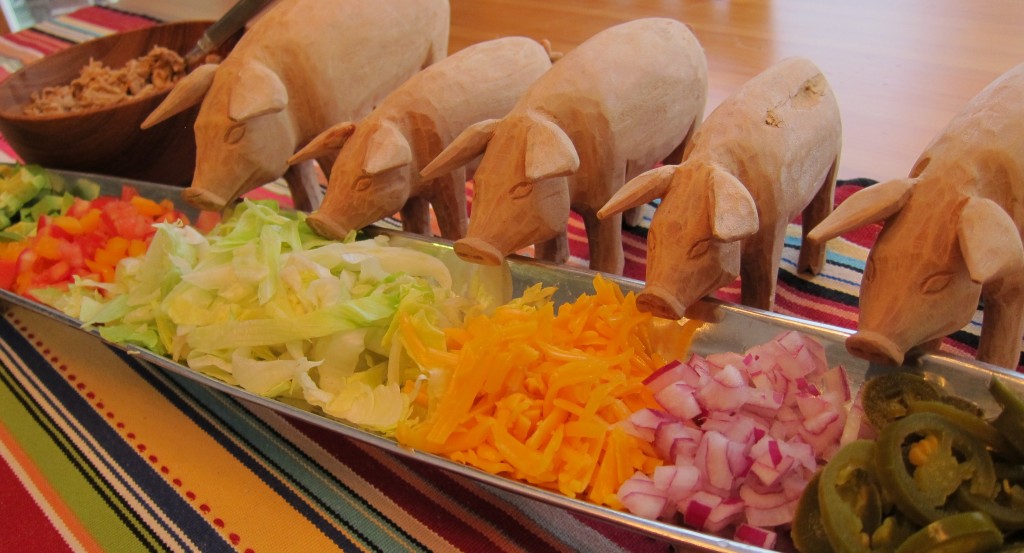
I found this 1940s produce crate label for Dominator Tomatoes, used by the T.O. Tomasello Company of Watsonville, California, on ebay. It features a U.S. fighter plane. I got it along with several other labels featuring airplanes, thinking it would be cute to frame them for my then-young son’s airplane-themed room.
I never did get around to framing those labels. Never finished collecting all of the state quarters with him either, but somehow we’ve managed to carry on.
This time of year, tomatoes do indeed dominate. The tomato season in Houston is short, and the tomatoes are not pretty, but they taste great. These heirloom tomatoes from the farmers market a few weeks ago were wonderful with sliced red onions and kirby cucumbers, drizzled with a little olive oil and red wine vinegar.
Tomatoes are believed to have originated in the Andes. The word tomato comes from the Aztec “xitomate,” which means “plump thing with a navel.” So the next time your loved one refers to you as a hot tomato, don’t be so flattered.
Botanically speaking, a tomato is a fruit. For culinary purposes, which, let’s face it, are far more important than botanical purposes, a tomato is considered a vegetable. As I told my son, when he was studying for his theology final and trying to explain the difference between knowledge and wisdom:
Knowledge is knowing a tomato is a fruit;
- 1 pint grape tomatoes, halved
- 12 calamata olives, sliced
- 6 large basil leaves, thinly sliced into ribbons
- ½ of a small red onion, thinly sliced
- 3 tablespoons olive oil
- 2 tablespoons red wine vinegar
- 1 tablespoon balsamic vinegar
- Salt and pepper, to taste
- ¼ cup grated Parmesan cheese
- Place tomatoes, olives, basil, and onion in a medium bowl. In a small bowl, whisk together oil and vinegars, and pour over tomato mixture. Stir gently to combine. Season to taste with salt and pepper. Just before serving, sprinkle with Parmesan cheese.
You say to-may-to, I say delicious












